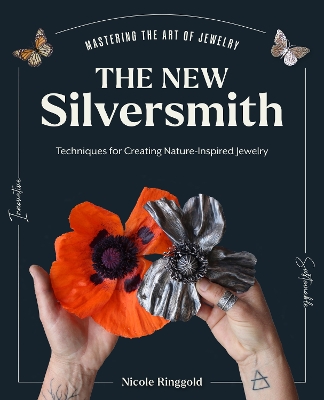
annieb123
Originally posted on my blog Nonstop Reader.
The New Silversmith is a technique and tutorial guide by Nicole Ringgold with an emphasis on sustainability and processes for silversmiths. Released 4th June 2024 by Quarto on their Quarry Books imprint, it's 160 pages and is available in hardcover and ebook formats.
This is not a beginner manual and the instruction presupposes familiarity and some experience with basic metalworking concepts: forming, shaping, sawing, torchwork, soldering, materials, and safety processes to name a few. The author writes well and authoritatively on all of the above and more. There's a lot of frank honesty in the way she speaks about workshop procedure and safety - there are some unalterable *must follow* rules, and some which can safely be ignored in *some situations*.
There are numerous really good exercises on annealing, work hardening, shaping and forming, sawing, filing, etc. These will not replace the need for instruction from a good teacher, but they do provide extracurricular instruction for keen smiths learning beyond the absolute basics.
The book is very well photographed throughout (it's one of the strengths of the book), and the photos are clear, and in color, without hands or tools in the way of the action. The author has a minimalist attitude about tool acquisition which is refreshing. She gives some good tips on substitutes and alternatives for some (expensive) tools and encourages readers to add more specialized tools only as, and when, they're needed for specific purposes.
Special/important information is provided throughout the book in highlighted text boxes inset into the chapters. This makes is much easier to find specific information without wading through a wall of text to locate it.
The chapter on general torchwork is superb, and her photos of flame composition are stellar (and -fiendishly difficult to photograph - whatever the publisher is paying the photographer, it's not enough).
The tutorial projects are varied, and except for the chainwork projects, are all representative and inspired by nature. Each project includes a bullet list of tools and materials, followed by step-by-step instructions and many process photos.
Five stars. This is a very well written manual. It is not a substitute for actual instruction, but would be a very good resource as an adjunct to hands-on learning with a mentor or class. It would be an excellent choice for public library acquisition, maker's spaces, vocational/technical instruction, or the artist's studio.
Disclosure: I received an ARC at no cost from the author/publisher for review purposes.
